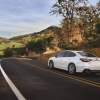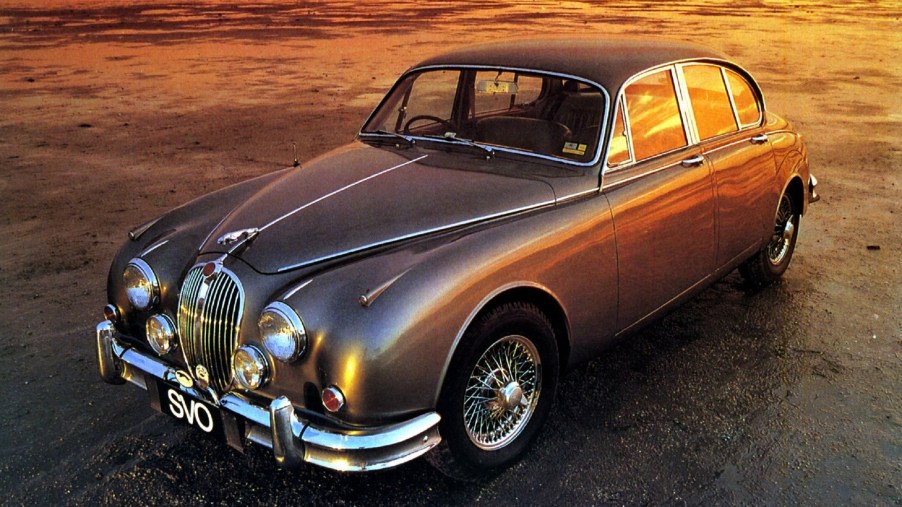
The Jaguar Mk2: The Classiest Way To Play Cops and Robbers
Sleepers come in all shapes and sizes, but sedans are commonly-featured. Models like the Mercedes-Benz 500E and Subaru Legacy Spec B look little-different from their baser counterparts. Which makes them perfect for robbers looking to hide or run away from the fuzz. And decades before the Lotus Carlton rocketed past British cops, the Jaguar Mk2 was doing the same thing.
The Jaguar Mk2’s history
In the mid-1950s, Jaguar had the fastest production car in the world, the 120-mph XK120. It was also fresh off several Le Mans wins with its C-Type and D-Type racers. The former introduced disc brakes to the racing world and the latter was the first monocoque, or unibody, race car.
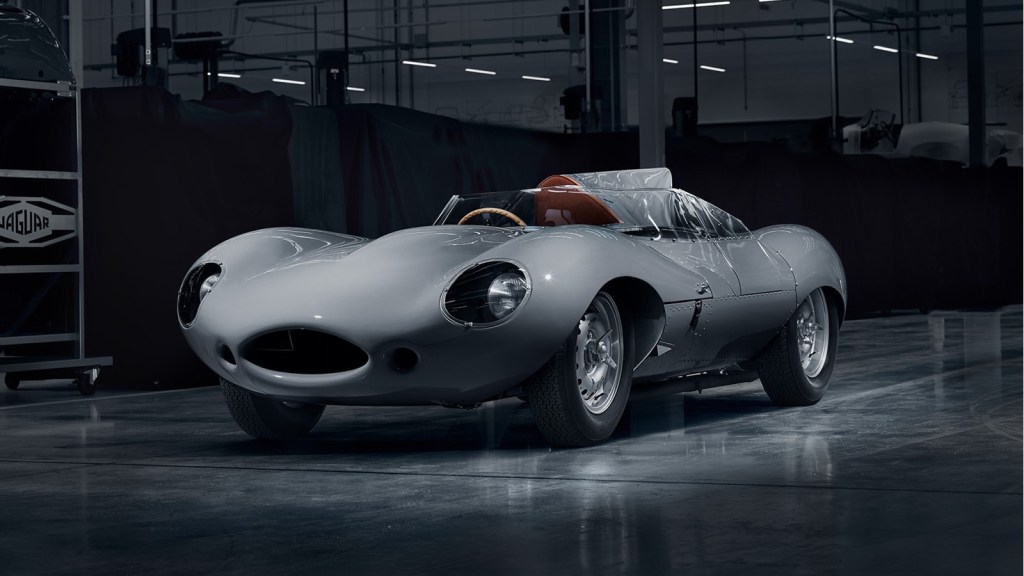
Besides pickup trucks and non-crossover SUVs, today every passenger car uses unibody construction. But at the time, automakers still made bare frames and engines that coachbuilders supplied bodies for. Monocoques were for airplanes, not cars.
However, at the same time as Jaguar was developing the D-Type, it was also working on a unibody road car, Silodrome reports. Codenamed ‘Project Utah,’ it would eventually result in the 1955 Jaguar Mk1. It was available with a 2.4-liter or a 3.4-liter sedan, and in 1957 it gained disc brakes. And at the time, it was a decently fast and sporty sedan, capable of reaching and maintaining 100 mph. Several racing versions were produced, and are still seen tearing it up at Goodwood.
Its successor, the 1959 Jaguar Mk2, though, would take company founder Sir William Lyons’ “Space, Grace, Pace” ideals even further.
The Jaguar Mk2 has style and speed
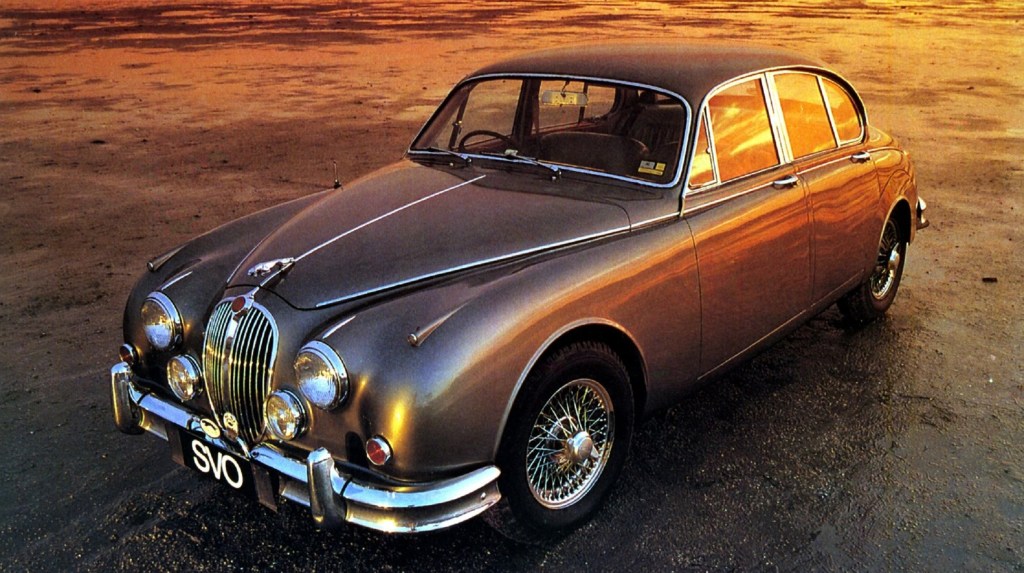
Externally, the Jaguar Mk2 looks fairly similar to the earlier Mk1. However, compared to the earlier sedan, the Mk2 has a larger cabin, bigger windows, and a wider rear track, Hagerty reports. Also, it has different front suspension geometry, and standard 4-wheel disc brakes, RM Sotheby’s reports.
The Jaguar Mk2 offered the same 120-hp 2.4-liter and 210-hp 3.4-liter six-cylinder engines as the Mk1, ClassicCars reports. There was also a Daimler-badged version with an aluminum-alloy 140-hp 2.5-liter V8. It weighs about 150 pounds less than the 2.4-liter six-cylinder, which makes for better handling.
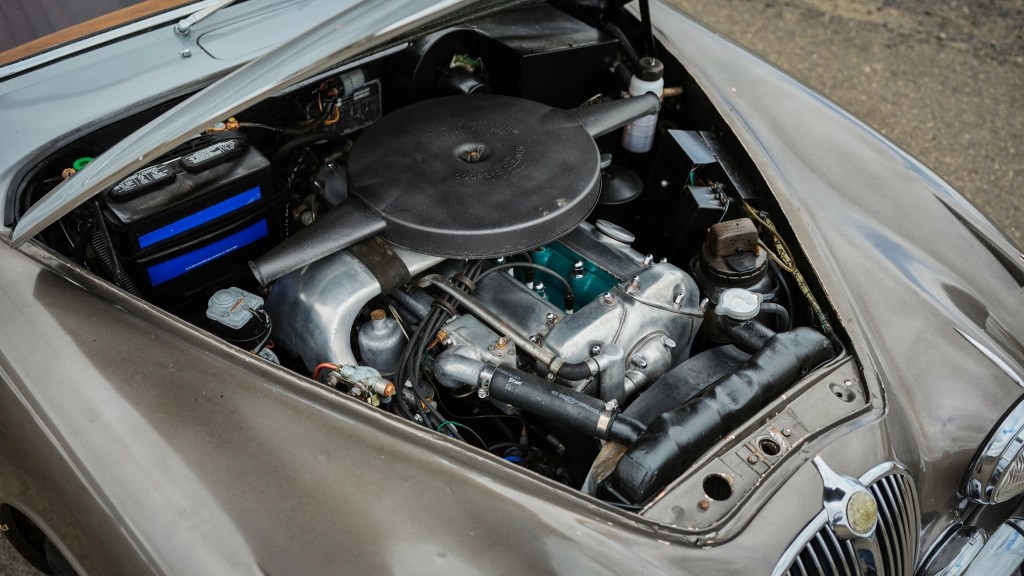
But today, the most desirable models are the ones with the 3.8-liter six-cylinder engine, Silverstone Auctions reports. It’s rated at 220 hp and 240 lb-ft, and with a 4-speed manual, the RWD sedan can go 0-60 in 8.5 seconds. True, that doesn’t seem fast today. But combined with its 125-mph top speed, that made it the fastest production sedan in the world.
It was so fast that it quickly became the get-away vehicle of choice for British bank robbers, Hagerty reports. This meant, much like Italian police did with Ferrari, the cops needed Jaguar Mk2s of their own. The Mk2 made such an impact that a 1960 model was the hero car for the British detective show Morse. The late Sir Stirling Moss also raced a Jaguar Mk2 regularly, Petrolicious reports.
Driving one today, it’s easy to see why the Jaguar Mk2 became known as ‘the bank robber’s car,’ Goodwood reports. Visibility is excellent, and the 3.8-liter engine has plenty of low-end torque. Although power steering became an option, the sedan doesn’t need it to be easy-to-drive. And the comfortable leather-upholstered interior, with real-wood dash, has seating for 5.
Getting one today
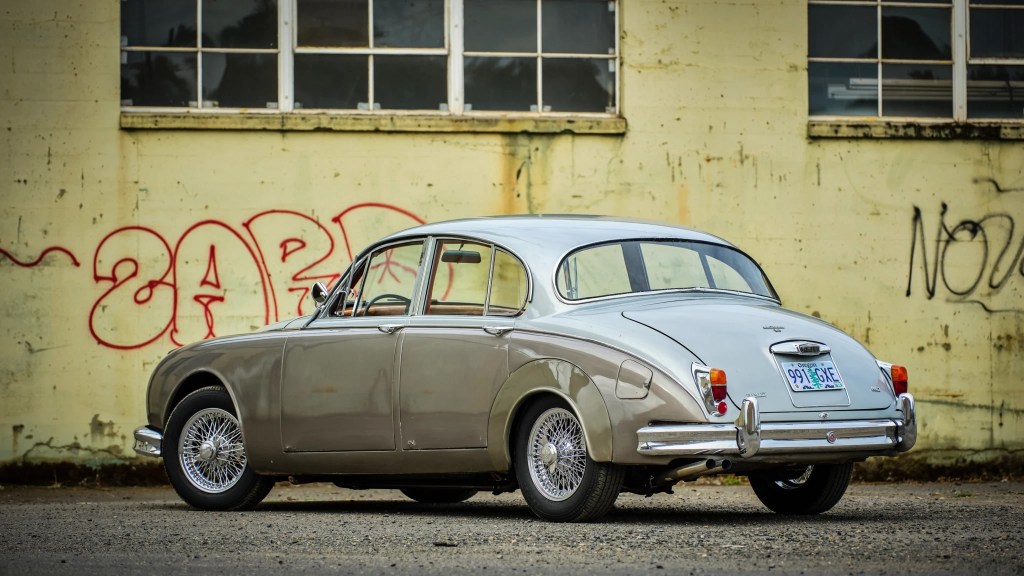
Pristine 1959-1967 Jaguar Mk2s, especially ones with the 3.8-liter engine, can be pricey. Hagerty reports Concours-level examples can cost $80,000-$90,000. However, it’s possible to find good-condition ones on Bring a Trailer for $20,000-$30,000.
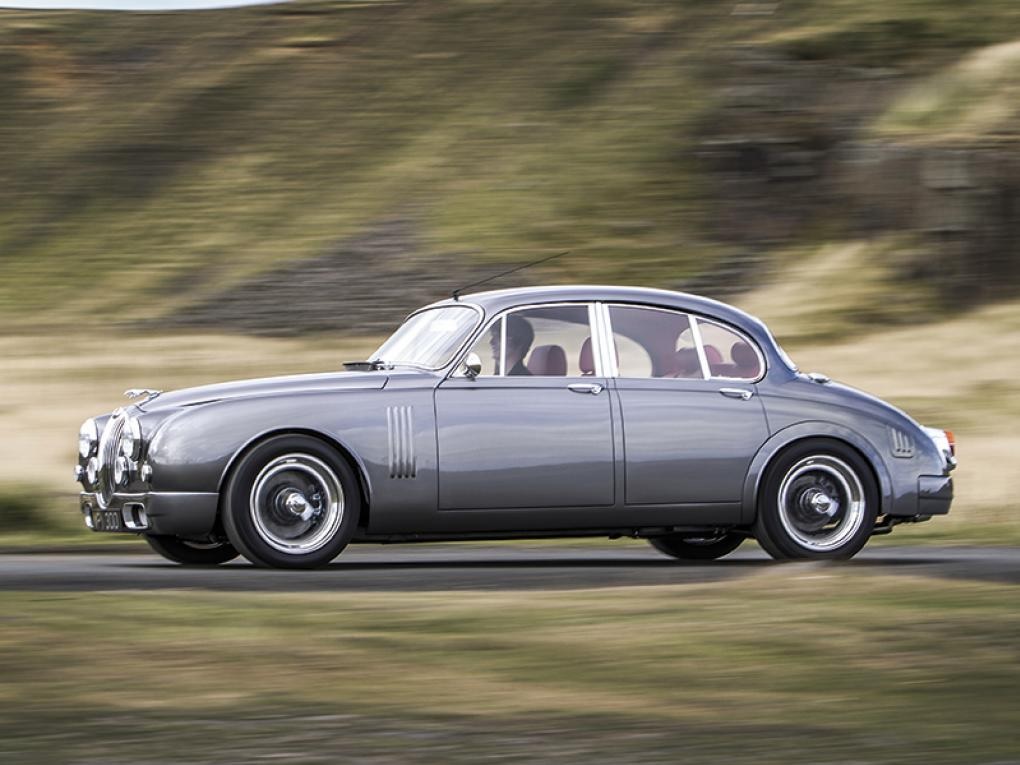
There’s even a Jaguar Mk2 restomod available, based on a one-off originally designed by none other than former Jaguar design director Ian Callum. He grew up watching the Mk2 star as the bad guys’ car of choice on TV. And when he finally got one, he decided to make it even better, Motor Trend reports, with the help of British restoration shop Classic Motor Cars.
The CMC Jaguar Mk2 by Callum is almost-fully de-chromed, with functional rear air vents and a 1.2”-lower ride height. Under the hood is a 260-bhp 4.3-liter version of the original six-cylinder engine, linked to a modern 5-speed manual. The rear axle is CMC’s own patented design. Plus, the sedan rides on a redesigned suspension with adjustable dampers, stiffer springs, and upgraded anti-roll bars. It also has modern power steering and a Clarion audio system with a backup camera. And the interior features red leather upholstery, wood trim, and custom gauges and switches.
Getting one of CMC’s Jaguar Mk2s, though, won’t be easy on the wallet. The build costs about $600k, Car and Driver reports.
Follow more updates from MotorBiscuit on our Facebook page.


